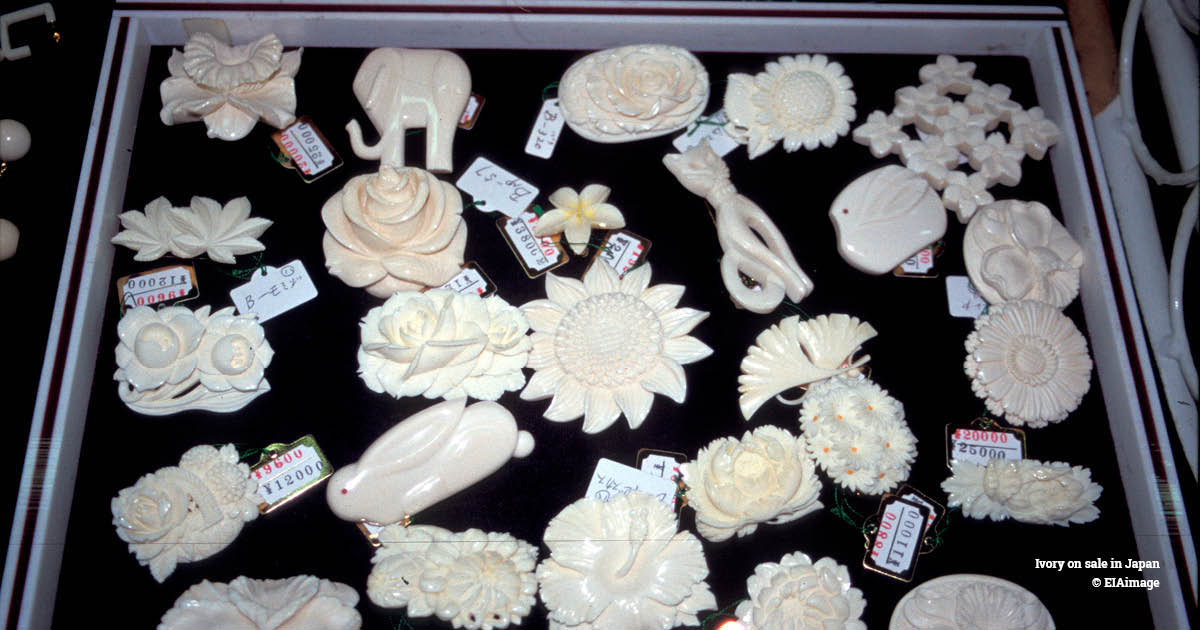Marking one year of the UK Ivory Act – and looking to the closure of the last legal ivory markets



Today (6 June) is the first anniversary of the implementation of the UK Ivory Act, the country’s comprehensive ban on virtually all forms of ivory trade.
Just two weeks ago, it was extended to include five other ivory-bearing species – hippos, narwhals, orcas, walruses and sperm whales. After elephant ivory, hippo ivory is the most at risk of trade.
The introduction of the UK Ivory Act was a significant success for EIA UK and our coalition partners after a sustained campaign to see the world’s largest ivory export market close.
As our efforts to secure the UK ivory ban have demonstrated, closing domestic ivory markets is a long-term, multi-phase process – and securing Government commitment to closing or restricting ivory trade, while a key milestone, is certainly not the endpoint.
In reality, much of the real work begins once the ban or restriction is in effect. To ensure the mandate is met by the regulating authority, dedicated systems and processes need to be funded, developed and staffed by qualified individuals; processes need to be trialed, evaluated and re-tested; policies and mechanisms are always needed to increase and improve cooperation, communication and coordination with other agencies and departments, such as standard operational guidelines.
And, of course, effective enforcement systems and processes need to be put in place.
So, while it is too soon to judge the success of the UK’s ban, we will continue to monitor and evaluate its impact and we will also continue to support the efforts of the UK Government and our partners to help ensure the ban is a success.

Malawi elephants (c) EIA
As we have regularly demonstrated in our efforts to close domestic ivory markets, legal domestic trade in ivory stimulates demand and incentivises the illegal sourcing of ivory which is, in turn, is laundered into the legal trade. Poorly regulated legal markets further compound the threat to elephant populations.
In 2016, recognising the threat posed by legal domestic markets, signatory countries to the Convention on International Trade in Wild Fauna and Flora (CITES) unanimously agreed that nations with domestic ivory markets linked to poaching or illegal ivory trade should close them.
To date, many countries including the UK, the US, many African elephant range states, and the EU have closed their ivory markets to protect elephants from the trade. As a significant win, China closed its ivory markets in 2017, the largest in world at that point.
While the UK Ivory Act is one of the world’s most stringent commercial ivory bans, others are not as rigorous.
The EU’s restrictions, which were updated in December 2021, are a case in point. The restrictions on ivory trade have been captured in the form of “guidance” and are therefore not legally binding. The guidelines are left to each Member State to implement. EIA, along with others, has repeatedly called for more stringent restrictions in the form of legally binding regulations and for the strict monitoring of the implementation by Member States.
The implementation of the updated EU guidelines on trade in ivory and monitoring thereof has since been captured in the EU’s revised Wildlife Trafficking Action Plan (WTAP).
EIA is actively engaged in the public process of commenting on the WTAP and its monitoring framework. The prompt implementation of a robust, time-bound monitoring system for the ivory guidelines that rigorously scrutinises implementation at all levels, especially by Member States, is required. We believe that minimum standards, targets and actions should jointly be identified with Member States, accompanied by regular reporting.

Ivory on legal sale in Japan (c) EIA
Currently, Japan holds the ignominious title of having the world’s largest remaining legal ivory market, our colleagues at EIA US and their Japanese partner, Japan Tiger and Elephant Fund (JTEF), have been engaged in a long-term battle to secure the closure of Japan’s domestic market.
In Japan today, there are thousands of Government-registered ivory dealers and the market has been continuously supplied by an influx of whole tusks registered for decades with little oversight.
Japan is also the only country to have received ivory in two CITES-approved ‘one-off’ international sales after the implementation of the 1989 ban on international commercial ivory trade.
As EIA US and JTEF investigations have revealed, Japan has been unable to control its domestic ivory market; its ivory trade controls are riddled with loopholes that enable illegal trade and illegal ivory exports. For example, there is no comprehensive tracking system for cut ivory pieces and worked products, such as hanko, cylindrical name stamps used to conduct many types of personal and professional business, much like handwritten signatures are used in the West.
An analysis of court cases in China related to the illegal export of ivory and ivory products from Japan to China for resale found that many cases involved organised criminal groups, indicating that Japan’s open market is undermining the efforts of other countries with closed markets.
Japan has repeatedly denied its domestic ivory market is contributing to the poaching of elephants and the illegal ivory trade and maintains that its controls are sufficient – despite calls for closure from NGOs and countries that have closed their ivory markets, Japan remains unmoved.
African elephant populations have declined by more than 86 per cent over 31 years with only approximately 400,000 remaining. The forest elephant, particularly threatened by poaching for the illegal ivory trade, is classified as ‘critically endangered’ and the savanna elephant is ‘endangered’.
To give elephant populations a fighting chance for recovery, the legal trade in ivory needs to be stopped everywhere, at every level, and the ban on international commercial ivory trade upheld.
To do its part to protect elephants from the trade in ivory, Japan must close its domestic ivory market.
EIA’s Elephant Campaign looks forward to the day when we are able to celebrate the closure of the last remaining domestic ivory market in the world.